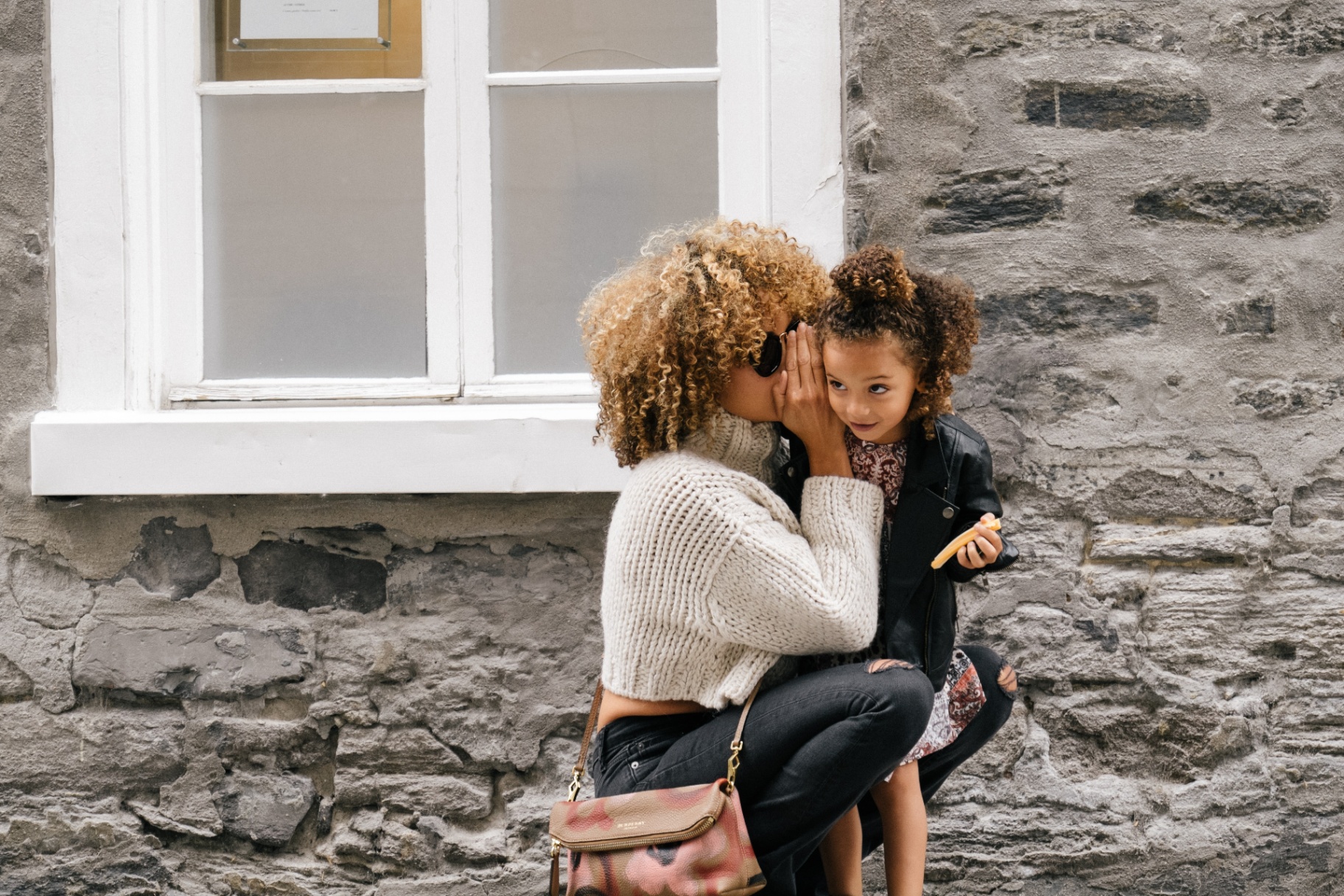Regarding How to Talk to Your Kids about Roe v. Wade: Consent

Friday, June 24, 2022 was devastating. In a 6-3 decision, the Supreme Court overturned Roe v. Wade, and I went numb. Not because I was surprised – we’ve been expecting this outcome for weeks. But somehow, I was still shocked that the decision was real. I couldn’t – and can’t – believe that my mother had more bodily autonomy and reproductive protection as a teenager in the late 1970s than my three year old does now, 40+ years later.
Beneath all the anguish and all the anger is the question: how do I talk to my kids about this?
How do I tell my daughter that the government will not protect her?
How do I teach my son the importance of compassion and consent in a culture that glorifies violence against people who aren’t cisgender, heterosexual men?
How do I talk with them about my fears as a queer person and as a queer parent raising them in a world that is so determined to hate people who don’t easily fit into a comfortable, definable box?
How do I keep them safe?
How do I? How do I? How do I?
And then I take a deep breath and a step back and I remember that these are already conversations we’re having and values we’re already establishing, so we keep on keeping on, but with more vigor because this is urgent and important.
So, how do I talk to my kids about this? Now, talking to toddlers or even older kids about abortion isn’t going to jive developmentally, but we can talk about topics related to bodily autonomy, consent, power and control, safety, etcetera and still drive the point home that nobody decides what to do with their bodies except them. How do you talk to your kids about Roe v. Wade if it’s not developmentally appropriate? Follow along.
Teach your kids the definition of CONSENT.
According to dictionary.com, consent means “to permit, approve, or agree; comply or yield” as in
He consented to the proposal or We asked her permission, and she consented. Consent also can be a noun meaning “permission, approval, or agreement; sanction; acquiescence.” For example: He gave his consent to the marriage.
In both of these examples, consent requires a question or request and an absolute, affirmative response or permission. For example:
“May I give you a hug?”
“Yes!”
“Great, thank you!”
And the two parties hug.
Teach your kids what isn’t consent.
Words or phrases that aren’t consent:
“No.”
“No thanks.”
“Another time.”
“Maybe.”
“Stop.”
“Don’t.”
“I don’t think so.”
“If you say so.”
Silence.
Anything that isn’t the literal word “yes” or some iteration thereof. The term “maybe” is NEVER consent. Silence is never consent. Someone pulling away or creating space for themself is not an invitation to try harder. If you have to ask twice, it’s not consent.
Teach your kids that they have a right to be asked for consent .
From the time they are born, children are their own independent little beings. Some love to cuddle, others don’t. Some love to run and play, others like to sit and read. Some like fruit, others live for mac and cheese. And just as we respect those differing temperamental attributes about our little nuggets, we also need to allow them to exercise bodily autonomy and to teach them about the word “no.” Just like adults, kids know when they do and don’t want to be touched. They know when they do and don’t want affection. Importantly, they communicate clearly when they don’t. It’s our responsibility as their safe adults to pay attention to their cues and to be respectful when they tell us “no” – even if it hurts our feelings. What does that look like in real time?
Asking before you give your child a kiss or a hug or a snuggle and respecting their response: it’s not about you.
Asking your kid if they want to hug their relatives and not forcing the issue if they say ‘no.’
Reinforcing with your child that they get to decide who touches them and who doesn’t. This can be teachers, friends, family members, etc. They don’t owe anyone their affection.
Allowing and honoring inconsistency in your child’s responses to touch and/or affection. YOU HAVE TO ASK AND GET CONSENT EVERY TIME.
Teaching your child about safe touch and encouraging them to talk with you if they feel unsafe.
Further, believing your child if they tell you if they feel unsafe or if they’ve been touched non-consensually, and taking steps to hold the person accountable and to keep your child safe.
Teach your kids to ask for consent and to be respectful when they get rejected.
Rejection is tough. It hurts our feelings and our egos, and sometimes we’d like nothing more than to plow right through those boundaries that have been set for us. However, part of helping our children develop skills around consent is teaching them that they’re going to get turned down. Inevitably, their friend isn’t going to want a hug or a fist bump or a high five. You as their parent may be touched out or needing some space and when you tell them as much, they’re going to lean in harder to get their way. This is the perfect opportunity to encourage, model, and reinforce with your child how to ask for consent and how to respect rejection.
Person 1: “May I give you a hug?”
Person 2: “No, thank you.”
Person 1: “Are you sure?”
Person 2: “Yes.”
Person 1: “Yes you’re sure, or yes I can give you a hug? Because I’m feeling really insecure right now, and I’d really like a hug.”
Person 2: “I’m sorry you’re feeling that way, but still, no.”
The conversation above should have ended after “No, thank you.” Instead, Person 1 continued pushing Person 2’s boundary around consent and bodily autonomy, co-opting the conversation, and centering their discomfort with rejection rather than respecting Person 2’s need for space. How this conversation could have gone:
Person 1: “May I give you a hug?”
Person 2: “No, thank you.”
Person 2: “That’s cool. Sometimes I don’t want to be touched, either.”
The example above illustrates 1) asking for consent, 2) respecting the response, and 3) empathizing with the other person’s experience, which builds safety and trust. While we don’t have to always exercise the third part of the equation, it’s helpful in teaching your child how to empathize with others.
Closing
The overturning of Roe v. Wade is a non-consensual act of violence against AFAB bodies enacted by a group of six who have no accountability to the millions of people they’re impacting. It disproportionately impacts Black and people of color and the queer community.
And yet, while I recognize that this decision likely is an indicator that things will regress and devolve past the point of anything recognizable, I am not without hope.
I am not without hope because I talk with my clients, and we discuss healthy boundaries and consent.
I am not without hope because I have these conversations about consent and respect with my kids.
And I am not without hope because I trust that you are having these conversations with the people in your lives as well.

